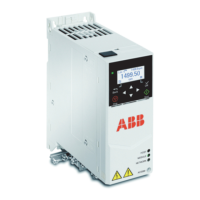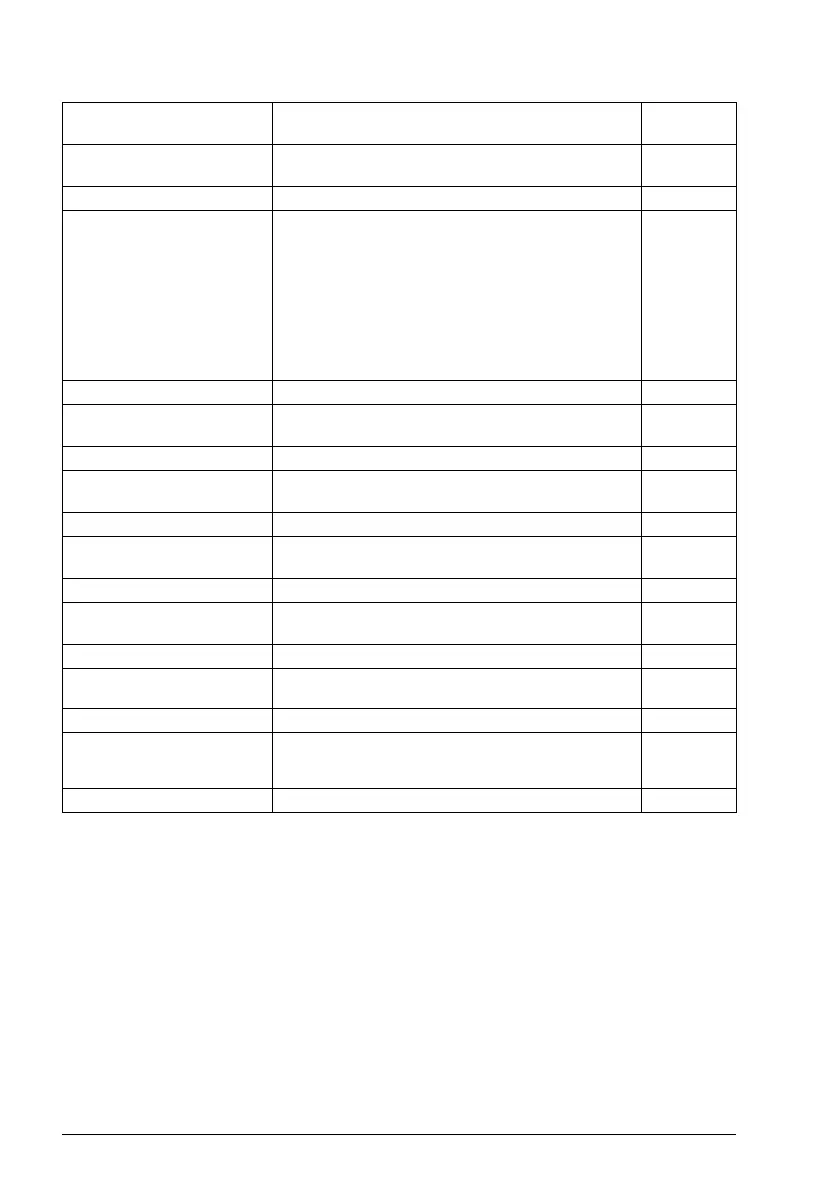232 Parameters
37.25 ULC underload point 5 Defines the fifth underload point.
See parameter 37.21 ULC underload point 1.
30.0%
-1600.0…1600.0% Underload point. 1 = 1%
37.31 ULC overload point 1 Defines the first of the five points on the Y-axis that
together with the corresponding point on the X-axis (37.11
ULC speed table point 1…37.15 ULC frequency table
point 5 or 37.15 ULC frequency table point 5…37.20 ULC
frequency table point 5) define the overload (higher)
curve.
At each of the five points the value of the underload curve
point must be equal to or smaller than the value of the
overload curve point. See parameter 37.21 ULC
underload point 1.
300.0%
-1600.0…1600.0% Overload point. 1 = 1%
37.32 ULC overload point 2 Defines the second overload point.
See parameter 37.31 ULC overload point 1.
300.0%
-1600.0…1600.0% Overload point. 1 = 1%
37.33 ULC overload point 3 Defines the third overload point.
See parameter 37.31 ULC overload point 1.
300.0%
-1600.0…1600.0% Overload point. 1 = 1%
37.34 ULC overload point 4 Defines the fourth overload point.
See parameter 37.31 ULC overload point 1.
300.0%
-1600.0…1600.0% Overload point. 1 = 1%
37.35 ULC overload point 5 Defines the fifth overload point.
See parameter 37.31 ULC overload point 1.
300.0%
-1600.0…1600.0% Overload point. 1 = 1%
37.41 ULC overload timer Defines the time period for which time the monitored
signal must remain continuously over the overload curve.
20.0 s
0.0…10000.0 s Time. 1 = 1 s
37.42 ULC underload timer Defines the time period for which time the monitored
signal must remain continuously below the underload
curve.
20.0 s
0.0…10000.0 s Time. 1 = 1 s
No. Name/Value Description Default
FbEq 16

